Arctostaphylos pringlei, Pringle Manzanita
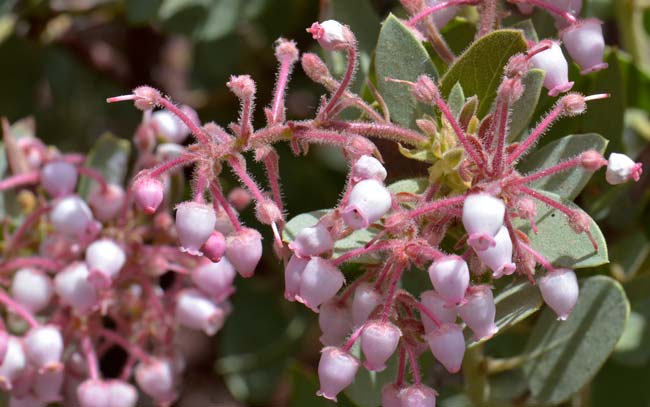
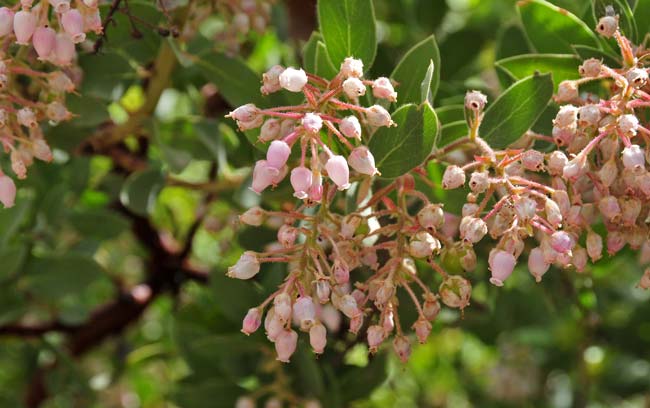
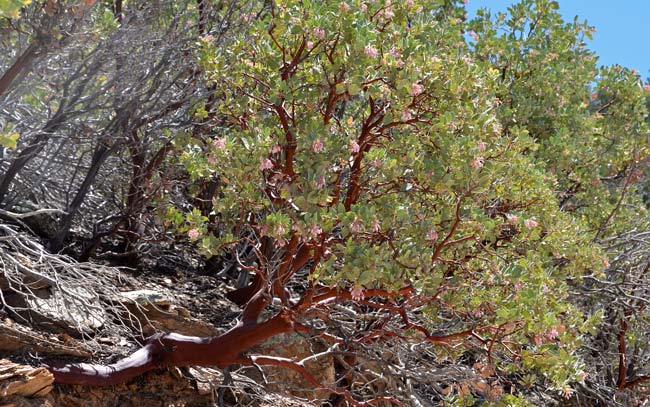
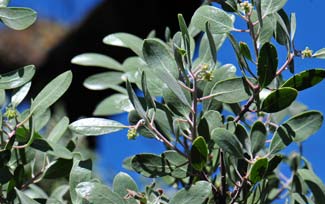
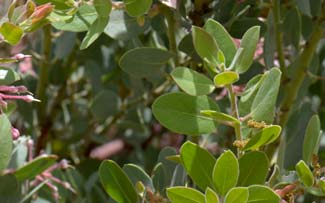
Scientific Name: Arctostaphylos pringlei
Common Name: Pringle Manzanita
Also Called: Manzanita, Pinkbract Manzanita, Pinkbracted Manzanita, Pringle's Manzanita;
(Spanish: Manzanita)
Family: Ericaceae, Heath or Heather Family
Synonyms: ()
Status: Native
Duration: Perennial
Size: Up to 5 feet or more.
Growth Form: Shrub/tree; erect; young stems glaucous, glandular, mature stems with smooth bark, reddish-brown or mahogany, may form dense thickets.
Leaves: Gray-green; leaf surfaces glaucous, glandular; rounded, ovate or elliptic, petiole, margins entire.
Flower Color: Pink to white; bell-shaped flowers; corolla glandular hairy; narrow sepals, flowers urn-shaped (urceolate); inflorescence a densely glandular hairy raceme; fruit is a red globose berry.
Flowering Season: April to June
Elevation: 4,000 to 6,500 feet.
Habitat Preferences: Dry rocky slopes in chaparral (pinyon-juniper) communities.
Recorded Range: Arctostaphylos pringlei is found in the United States, Baja California and possibly northern Mexico. In the United States it is native to Arizona, California, Nevada and Utah. In Arizona Pringle Manzanita is found in the northwest, central and southeast parts of the State.
North America & US County Distribution Map for Arctostaphylos pringlei.
U.S. Weed Information: No information available.
Invasive/Noxious Weed Information: No information available.
Wetland Indicator: No information available.
Threatened/Endangered Information: No information available.
Arctostaphylos pringlei subsp. drupacea, Pinkbracted Manzanita and
Arctostaphylos pringlei subsp. pringlei, Pringle Manzanita.
Comments: Pringle Manzanita is a locally common shrub or small tree in Arizona in Chaparral communities of pinyon-juniper. The profile and smooth mahogany-colored stems are distinctive.
Pringle Manzanita is similar in appearance to Pointleaf Manzanita (Arctostaphylos pungens) however Pringle Manzanita has much more pubescence, (glandular hairy), blooms earlier in the year and typically grows in lower elevations. Birds, mammals and other animals eat the berries.
The berries of Pringle Manzanita are eaten raw or cooked and also made into jelly by southwestern Native Americans. See ethno-botanical uses at Native American Ethnobotany, University of Michigan, Dearborn.

